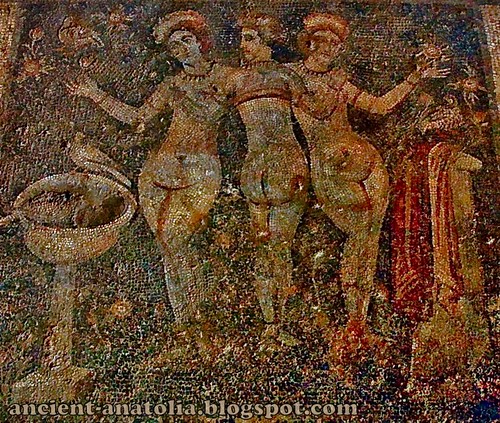
Charites, known in Greek mythology as The Three Graces, goddesses of such things as charm, beauty, and creativity. In Roman mythology they were known as the Gratiae.
A Charis is one of several Charites, goddesses of charm, beauty, nature, human creativity and fertility in Greek mythology. They ordinarily numbered three, from youngest to oldest: Aglaea ("Beauty"), Euphrosyne ("Mirth"), and Thalia ("Good Cheer"). In Roman mythology they were known as the Gratiae, the "Three Graces."
The Charites were usually considered the daughters of Zeus and Eurynome, though they were also said to be daughters of Dionysus and Aphrodite or of Helios and the naiad Aegle. Homer wrote that they were part of the retinue of Aphrodite. The Charites were also associated with the underworld and the Eleusinian Mysteries.
The youngest of the Charites, Aglaea or Aglaia ("splendor, brilliant, shining one") was Hephaestus' wife and Asclepius' daughter in Greek mythology.
Euphrosyne was the Goddess of Joy, and the incarnation of grace and beauty.
The Grace Thalia was the goddess of banquets and other festivities. Her name means "rich" or "abundant". She is also portrayed as the half-blood daughter of Zeus and a mortal. Thalia was described as fair-cheeked and beautiful. She is the goddess of bountifulness and bloom.